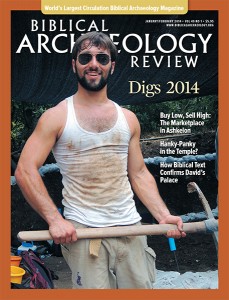The Interchange Between Bible and Archaeology
The case of David’s Palace and the Millo
Evidence from the Bible and from archaeology must be interpreted independently of each other, but in the end they must be compared and interpreted.
Take Jerusalem: In view of the continuous settlement of Jerusalem from the tenth century B.C.E. until the Babylonian destruction of the First Temple in 586 B.C.E. and, after a short gap, throughout the Persian and Hellenistic periods, local traditions may well have passed orally from generation to generation. And these authentic local traditions might well have reached the authors of the Biblical narratives in the later periods.
With this in mind, I would like to consider our understanding of two major monuments in ancient Jerusalem: (1) The so-called Large Stone Structure (LSS) recently excavated by Hebrew University archaeologist Eilat Mazar and identified by her as King David’s palace,a and (2) the Stepped Stone Structure (SSS) extending down the slope from the Large Stone Structure and said to be the Millo, referred to in the books of Samuel and Kings.
Already a library member? Log in here.
Institution user? Log in with your IP address.

